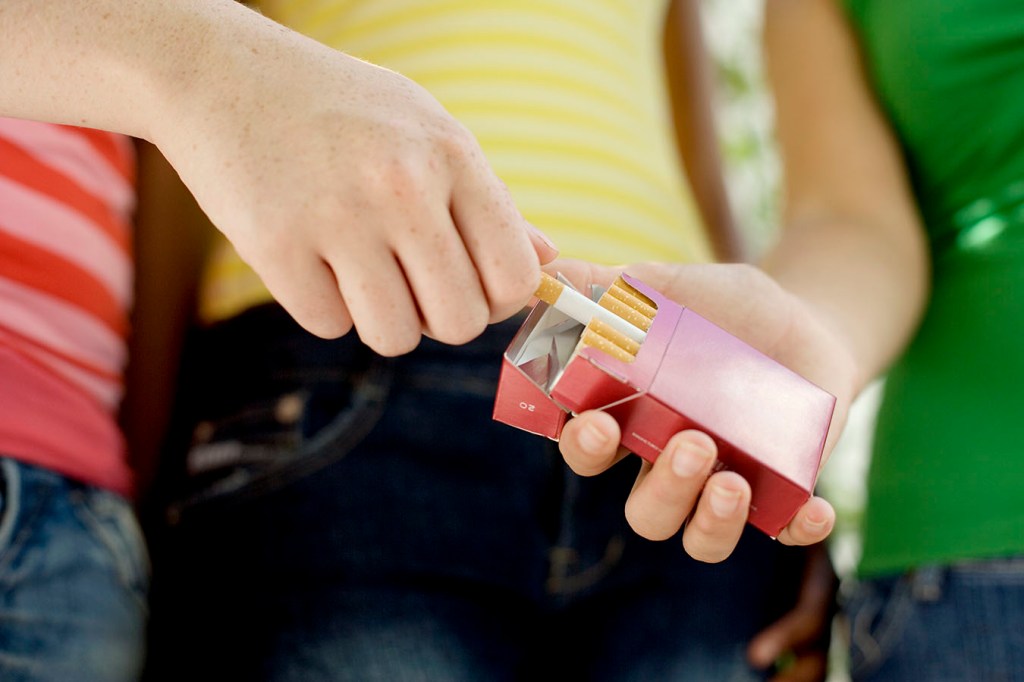In June 2016, California became the second state in the country, after Hawaii, to increase the minimum tobacco sales age from 18 to 21.
A report published last month in the journal Tobacco Control suggests the new law is already working. Seven months after it took effect, preliminary data show, the percentage of state retailers selling tobacco to kids under age 18 dropped significantly — from 10.3 percent before the law took effect, to 5.7 percent afterward. The rates are based on surveys in which teenaged decoys attempted to purchase tobacco from retailers.
By raising the minimum age to 21, experts had predicted teenagers would no longer have such easy access to tobacco through their slightly older friends.
Survey data also showed that almost 99 percent of tobacco retailers were aware of the new law, and that the majority supported it.
April Roeseler, chief of the California Tobacco Control Program and co-author of the report, said she was “pleasantly surprised” at how well tobacco retailers had responded to the increased age of purchase.
“We know that they’re the front line in helping make this law be successful,” she said. “I think we expected that this would be a tough law to implement and get compliance with, but I think it’s just indicative of the groundwork we’ve been doing in California for nearly three decades.”
Larry Cohen, executive director of the Oakland-based Prevention Institute, said he, too, was surprised that most retailers support the law.
“It’s a sign that there’s real momentum over the past couple of decades in recognizing that tobacco is harmful and that protections are appropriate,” he said.
Sen. Ed Hernandez (D-West Covina), chair of the Senate Health Committee, said he first proposed legislation to increase the state’s minimum tobacco sales age after reading a magazine article about teen smoking in 2015. Soon after, the Institute of Medicine published a report saying that 90 percent of adults who became daily smokers first used tobacco by the time they were 19.
The following year, Hernandez introduced the law, and his colleagues in the California legislature passed it. The law does permit active-duty military members to purchase tobacco even if they are not yet 21, a concession Hernandez said he made in order to get needed votes. He said he received pushback from people in the military who believed “if you are old enough to go to war, you are old enough to smoke.” Hernandez notes that the law still requires members of the military to be 21 to buy alcohol.
The new report shows that how well retailers comply with the new age limits also varies geographically: Retailers in Los Angeles sold to underage buyers much more frequently than did those in the Bay Area.
“There are always kids that come around,” said an employee of Sana Market and Liquor on Telegraph Avenue in Oakland, who did not want his name published so he could speak freely.
He said the market — which carries snacks and alcohol in addition to cigarettes — is very strict about checking IDs.
They also refuse to sell to adults when it is clear they are trying to buy for someone under legal purchasing age. So-called shoulder-tap buys continue to be a problem, according to the study.
Still, said the employee, there is only so much the law can do: “Whoever is going to smoke is going to smoke.”
Nearby, just off upscale Piedmont Avenue, Stephen Richman, the longtime owner of The Piedmont Tobacconist, said he supports the increased age of sale. Even before the new law, he said, teenagers rarely tried to buy from his shop, with its wood-paneled walls, leather lounge chairs and background jazz.
He pointed to a big, yellow sticker on the cash register that read: “The Sale of Tobacco Products to Persons Under 21 Years of Age is Prohibited by Law and Subject to Penalties.”
“This discourages them,” he said.
Occasionally, he said, a young person comes in hoping to buy a cigar to hollow out and fill with marijuana. When they hear the price, he added, they usually leave.
KFF Health News' coverage of these topics is supported by Heising-Simons Foundation and California Health Care Foundation
This story was produced by KFF Health News, which publishes California Healthline, an editorially independent service of the California Health Care Foundation.







